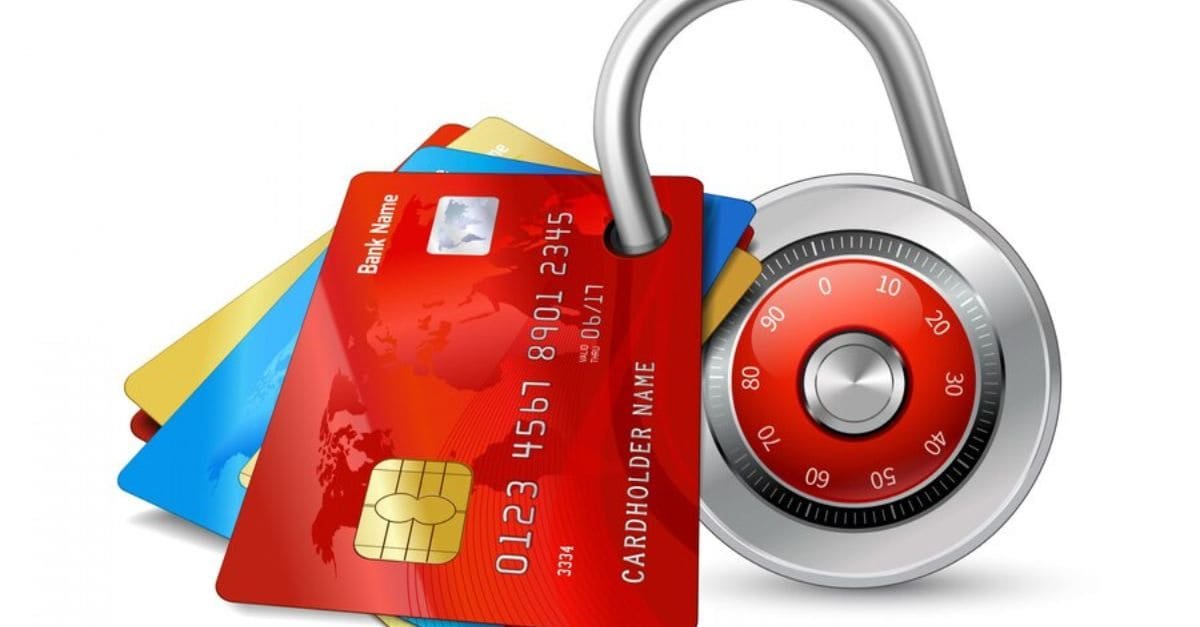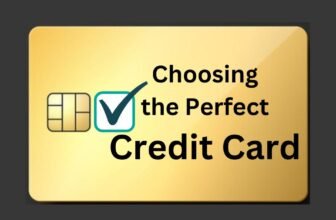
We’ve all seen the movies where our suave hero effortlessly slides a credit card into a locked door and quickly gains access. But does this work in real life, or is it just Hollywood fiction?
While using a credit card to pick a lock may seem impressive and convenient, other methods are often more practical, such as using traditional lock-picking tools or improvised items like bobby pins.
However, in emergencies where you don’t have access to proper tools, knowing how to pick a lock with a credit card to open a lock can still be helpful if the lock is vulnerable to this attack.
But before we dive into the practical lesson, let’s first discuss which types of credit cards work best for lock picking and which locks are most susceptible to this method.
To learn more about lock picking, check out my comprehensive beginner’s guide for even more valuable information! So, while using a credit card to pick a lock may not always be the most practical or efficient option, having this skill in your repertoire can still prove helpful in certain situations. Plus, learning about different lock-picking techniques can be a fun and exciting hobby to pursue. Now, let’s get into the nitty-gritty of using a credit card as a lock-picking tool.
Table of Contents
Unlocking a door with a credit card is not as easy as it seems in movies.
Using a credit card to unlock a door may seem simple and efficient, but it is not recommended. The force and pressure applied while opening a locked door can damage the credit card. This rough handling can cause the card to bend or even break, causing inconvenience and potential financial loss. It is not wise to strain a valuable item like a credit card.
Hence, it is advised to use alternative items that are more suitable for this purpose. Here are some examples:
- Gift cards
- Membership cards
- Old hotel keys
- Insurance cards
These items are typically lightweight, flexible, and less valuable than a credit card, making them more suitable for unlocking doors. If none of these options are available, you can use a strip cut from a plastic soda bottle as an emergency alternative. It may not be the most elegant solution, but it does the job without risking damage to your credit cards.
Remember always to use caution when attempting to unlock a door with a card, and only use items you are willing to potentially damage or lose.
How does lock picking with a credit card work?
Lock picking with a credit card is a technique that involves manipulating the components of a lock to gain access without using a key. While it may sound like something out of a spy movie, it is a relatively simple process that can be mastered with practice.
The first step in lock picking with a credit card is understanding how the lock mechanism works. Many door locks consist of a cylinder that stocks a series of pins. When a key is inserted into the lock, the pins align at specific heights, allowing the cylinder to rotate and unlock the door. Using a credit card, you can mimic the action of a key and manipulate the pins to open the door.
It’s important to note that lock picking with a credit card should only be used in emergencies or with the proper authority. Engaging in unethical or illegal activities can have serious consequences. Always ensure you have permission to pick the lock and use this technique responsibly.
Legal considerations and ethical implications of lock picking
Lock picking, including using a credit card, is a skill that can be both legal and ethical when used responsibly. Understanding the laws and regulations surrounding lock picking in your jurisdiction is essential before attempting to pick a lock.
In many countries, owning lock-picking tools is legal as long as they are not used illegally. However, using lock-picking techniques to gain unauthorized access to someone else’s property is considered illegal and unethical.
Before picking a lock with a credit card, always ensure you have the legal right. If you are locked out of your property or have permission from the owner, you can proceed responsibly. It’s essential to respect the privacy and security of others.
Tools needed for lock picking with a credit card
You’ll need a few essential tools to pick a lock with a credit card. While a credit card can be the primary tool, having a few additional items is necessary to assist in the process.
- Credit card: Choose a credit card that is sturdy and flexible. Avoid using cards with embossed numbers or raised designs, which can hinder the technique’s effectiveness.
- Tension wrench: A tension wrench is used to apply rotational pressure to the lock cylinder. This tool helps mimic the action of a key and allows you to manipulate the pins.
- Laminated slip sheet: A laminated slip sheet, often made from a thin plastic material, can create tension on the pins while picking the lock. It helps prevent the credit card from slipping out of the lock mechanism.
- Wire bender: A wire bender is a small tool to create a slight bend in the credit card. This bend allows for better control and maneuverability when picking the lock.
With these tools, you’ll be ready to tackle your first lock-picking challenge using a credit card.
Step-by-step guide on picking a primary lock with a credit card
Now that you understand the basics of lock picking with a credit card and have the necessary tools let’s dive into the step-by-step process. This guide will walk you through selecting a primary lock using a credit card.
- Prepare the credit card: Start by bending the credit card slightly near one end. This bend should be at a 45-degree angle and will serve as the pick. The remaining portion of the card will act as a handle.
- Insert the card: Insert the credit card into the gap between the door frame and the door, just above the lock. Ensure the card’s bent end faces the pins inside the lock.
- Apply pressure: With the card inserted, apply slight pressure toward the pins using the tension wrench. This pressure mimics the rotational force exerted by a key.
- Rake the card: While maintaining pressure with the tension wrench, rapidly move the card in and out of the lock. This motion is known as raking and helps to manipulate the pins.
- Feel for feedback: As you rake the card, pay attention to any feedback you receive from the lock. You may feel vibrations or hear clicks, indicating that the pins are moving into place.
- Rotate the cylinder: Once you feel all the pins aligned, apply additional pressure with the tension wrench and rotate the cylinder in the direction of unlocking. This should open the door.
Evoke, lock picking is an ability that needs exercise and skill. It may take several attempts before you successfully pick a lock with a credit card. Be patient and persistent, and with time, you’ll become more proficient.
Advanced techniques for picking locks with a credit card
Once you have mastered the basic lock-picking technique with a credit card, you can explore advanced techniques to tackle more complex locks. These techniques require a deeper understanding of lock mechanisms and additional tools.
One advanced technique is the single-pin picking method. Instead of raking the card rapidly, this method involves individually manipulating each pin to set it at the correct height. It requires a delicate touch and precise control.
Another technique is using a bypass tool called a “shim.” A shim is a thin piece of metal that can be inserted into the space between the lock’s bolt and the strike plate. You can disengage the bolt and unlock the door without picking the pins by manipulating the shim.
Experienced individuals with proper authority should attempt advanced lock-picking techniques carefully. Always respect the laws and regulations regarding lock picking in your jurisdiction.
Common mistakes to avoid when picking locks with a credit card
While lock picking with a credit card can be a valuable skill, there are common mistakes that beginners often make. By avoiding these mistakes, you can increase your chances of successfully picking a lock.
One common mistake is using too much force. Lock picking requires finesse and precision, not brute strength. Excessive force can damage the lock or break the credit card, rendering it useless.
Another mistake is not using the proper tension. The tension wrench must apply slight rotational pressure to the lock cylinder. Without the right amount of tension, the pins will not align properly, making it impossible to unlock the door.
Additionally, using the wrong credit card type can hinder your lock-picking efforts. Avoid cards with embossed numbers or raised designs, as they can interfere with the movement of the pins.
By being aware of these common mistakes and practicing patience and control, you can improve your lock-picking skills and avoid unnecessary setbacks.
Bonus: Can you add a Credit Card to the Cash App?
Safety precautions when practicing lock picking
Practicing lock-picking with a credit card can be a fun and educational hobby. Still, it’s essential to prioritize safety. Follow these safety precautions to ensure a safe and enjoyable lock-picking experience:
- Obtain permission: Only practice lock picking on locks you own or have permission to pick. Engaging in unauthorized lock-picking can have legal consequences.
- Practice in a controlled environment: Choose a safe and controlled environment to practice your lock-picking skills. Avoid practicing on doors that are in use or public spaces.
- Use proper tools: Always use the correct tools for lock picking. Using makeshift tools or improper techniques can lead to accidents or damage to the lock.
- Respect others’ privacy: Avoid picking locks without permission, even if you have the skills to do so. Respect the privacy and security of others, and use your lock-picking skills responsibly.
By following these safety precautions, you can enjoy the art of lock picking with confidence and peace of mind.
Lock-picking with a credit card vs. traditional lock-picking tools
Lock-picking with a credit card offers a convenient and discreet method of entry, but how does it compare to standard lock-picking tools? Let’s explore the differences between these two approaches.
Credit card lock picking is a non-destructive method that does not require specialized tools. It can be an effective way to access locked doors in emergencies or when traditional tools are unavailable.
On the other hand, traditional lock-picking tools, such as lock picks and tension wrenches, offer more precision and control. Locksmiths can use these tools explicitly designed for lock picking in a broader range of locks.
While credit card lock-picking may be more accessible to beginners, traditional lock-picking tools provide greater versatility and accuracy. Ultimately, personal preference and the specific circumstances in which one needs to pick a lock determine the choice.
Conclusion:
In conclusion, learning to pick a lock with a credit card can be valuable in certain situations. However, it is essential to note that this knowledge should not be used for illegal or unethical purposes. It is always best to seek professional help when dealing with locked doors or safes.
You can become proficient in credit card lock picking by understanding the mechanics, using the right tools, and practising patience and finesse. Remember always to prioritize safety, respect the privacy of others, and ensure that you have the legal right to pick a lock.
In addition, picking locks with credit cards may not always work, especially on more sophisticated lock systems. It is essential to have a backup plan in case the credit card method fails.
FAQs: How to Pick a Lock with a Credit Card?
Is it possible to pick a lock with a credit card?
It is possible to pick a lock with a credit card. However, it requires some skill and practice.
Can I pick a lock with any credit card?
Using a credit card with a flexible and thin body is recommended, such as a gift card or membership card. Avoid using cards with embossed numbers or thick plastic.
Is it legal to pick a lock with a credit card?
Picking a lock without the owner’s permission is illegal in most places. Ensure you have proper authorization before attempting to pick a lock with a credit card.
What is the best type of lock to pick with a credit card?
Simple spring locks are the easiest to pick with a credit card. Avoid complex or high-security locks as they may require specialized tools and techniques.
How do I insert the credit card into the lock?
Insert the credit card between the door and the doorjamb, right above or below the latch. Make sure to insert it at an angle, with the shorter edge of the card facing towards you.






